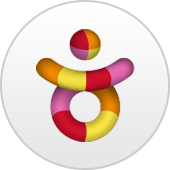- Log in
-
- Sydney Overseas Office
- London Overseas Office
- Toronto Overseas Office
- Los Angeles Overseas Office
- New York Overseas Office
- Ulaanbaatar Overseas Office
- Dubai Overseas Office
- New Delhi Overseas Office
- Manila Overseas Office
- Jakarta Overseas Office
- Hanoi Overseas Office
- Kuala Lumpur Overseas Office
- Singapore Overseas Office
- Bangkok Overseas Office
- Map
- Sydney Overseas Office
- London Overseas Office
- Toronto Overseas Office
- Los Angeles Overseas Office
- New York Overseas Office
- Ulaanbaatar Overseas Office
- Dubai Overseas Office
- New Delhi Overseas Office
- Manila Overseas Office
- Jakarta Overseas Office
- Hanoi Overseas Office
- Kuala Lumpur Overseas Office
- Singapore Overseas Office
- Bangkok Overseas Office
-
-
-
Unique Transportation
-
17.1K
0
1
-
-
Korea_Tourism
beach_train
healing
city_tour_bus
train_travel
city_tour
-
-
Unique Means of Transportation in Korea
Visitors can make the best out of their time getting from one place to another by opting for unique transport options that combine both the aspects sightseeing and transportation. A variety of themed travel transportation programs such as city tour buses and tourist trains can help save you from the stress of deciding where to go next. There is a variety of themes to choose from, and you can be assured that you’re in for a convenient ride that takes you around carefully selected destinations.
City tour bus
If you seek to reach areas that are not easily accessible by public transportation or visit several attractions at once, a city tour bus is a great option. Seoul, Busan, Yeosu and Jeju are notable cities with city tour buses that are well-known among international tourists. They are useful when traveling in small and mid-sized cities with relatively fewer public transportation routes and subsequent difficulties in getting from one location to another.
There are two types – hop-on, hop-off buses where one get on and off whenever they want as it circulates a predefined route; and themed buses where one ride for an entire day to look at a number of tourist attractions.Popular city tour buses by region- Seoul: en.seoulcitybus.com(Korean, English, Japanese, Chinese)
- Busan: www.citytourbusan.com (Korean, English, Japanese, Chinese)
- Incheon: citytour.ito.or.kr (Korean, English)
- Jeju: www.jejucitybus.com (Korean, English, Japanese, Chinese)
- Tongyeong: www.tycitu.com (Korean, English)
- Suncheon: www.suncheon.go.kr (Korean, English, Japanese, Chinese)
- Gyeongju: cmtour.co.kr (Korean, English, Japanese, Chinese)
Tourist trains
Tourist trains are available in different themes and routes, allowing passengers to enjoy diverse sceneries of Korea and fully enjoy the charms traveling by railway. Read on to see offered themes, ranging from riding along near the borders of DMZ to trips to the mountains and the seas. You can purchase the tickets on-site at the ticket booths at major train stations or reserve a seat online through the Korail website and Korail mobile app. As train schedule is subject to change due to maintenance, visitors are advised to check the operation schedule in advance.
*Korail website: www.korail.com
 【 Jeongseon Arirang Train 】
【 Jeongseon Arirang Train 】
East Sea and Santa Train runs along the coast of the East Sea from Gangneung Station in Gangwon State to Buncheon Station in Gyeongsangbuk-do. Buncheon Station features Bonghwa Santa Village decorated with Christmas-themed ornament, including a Santa Post Office and sledding hill.- Route: Gangneung - Jeongdongjin - Mukho - Donghae - Singi - Dogye - Dongbaeksan - Cheoram - Seokpo - Seungbu - Yangwon - Buncheon
- Duration: 3 hours 56 minutes
West Gold Train (G-Train) runs from Yongsan Station in Seoul to Iksan Station in Jeollabuk-do. It is painted in gold to represent the golden waves of the sunset-struck West Sea. The G-Train features ondol (traditional floor heating system) cabins decorated in hanok-style (traditional Korean house) theme.- Route: Yongsan - Yeongdeungpo - Suwon - Asan – Onyangoncheon - Yesan - Hongseong - Gwangcheon - Daecheon - Janghang - Gunsan - Iksan
- Duration: 3 hours 6 minutes
Baekdudaegan Mountain Range Canyon Train (V-Train) runs from Cheoram Station in Gangwon State to Yeongju Station in Gyeongsangbuk-do. You can enjoy the beautiful canyon view of the Baekdudaegan Mountain Range, the most rugged mountain range in Korea, while riding a slowly running train. The cabins have a nostalgic vibe that suits the pleasant scenery.- Route: Cheoram - Seungbu - Yangwon - Buncheon - Chunyang - Bonghwa - Yeongju
- Duration: 2 hours 8 minutes
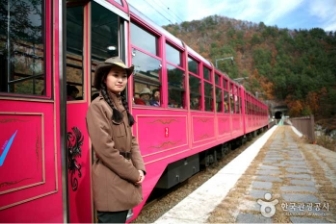
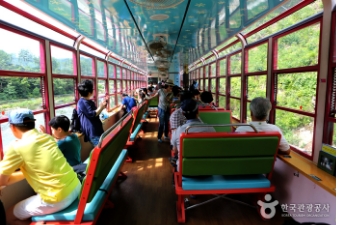 【 Baekdudaegan Mountain Range Canyon Train (V-Train) 】South Coast Train (S-Train) is available in two routes: one that runs between Seoul Station and Yeosu Station in Jeollanam-do (Jeolla Line), and the other that runs between Busan Station and Mokpo Station (Gyeongjeon Line). The S-Train has four types of themed cars with different seating arrangements suited for each theme. The Busan-Mokpo route runs slowly while passing many of the beautiful cities on the South Coast.
【 Baekdudaegan Mountain Range Canyon Train (V-Train) 】South Coast Train (S-Train) is available in two routes: one that runs between Seoul Station and Yeosu Station in Jeollanam-do (Jeolla Line), and the other that runs between Busan Station and Mokpo Station (Gyeongjeon Line). The S-Train has four types of themed cars with different seating arrangements suited for each theme. The Busan-Mokpo route runs slowly while passing many of the beautiful cities on the South Coast.- Jeolla Line route: Seoul - Yeongdeungpo - Suwon - Cheonan - Seodaejeon - Iksan - Jeonju – Imsil - Namwon - Gokseong - Guryegu - Suncheon - Yeosu Expo
- Duration: 4 hours 52 minutes
- Gyeongjeon Line route: Busan - Gupo - Mulgeum – Samnangjin - Jinyeong - Changwon Jungang - Masan - Jinju - Bukcheon - Hadong – Gwangyang - Suncheon - Beolgyo - Deungnyang – Sinboseong – Jangdong – Jeonnam Jangheung – Gangjin – Haenam – Yeongam - Mokpo
- Duration: 5 hours 8 minutes
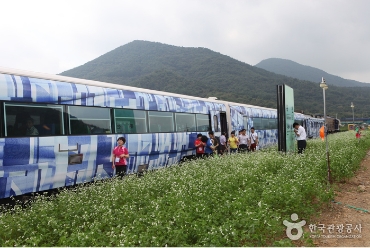
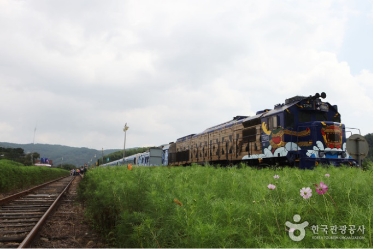 【 South Coast Train (S-Train) 】Jeongseon Arirang Train (A-Train) operates between Cheongnyangni Station in Seoul and Auraji Station in Gangwon State. You can enjoy the atmosphere and the taste of Auraji, the area known as the origin of Jeongseon Arirang, and the countryside village of Jeongseon. Each cabin is colorfully decorated in different themes.
【 South Coast Train (S-Train) 】Jeongseon Arirang Train (A-Train) operates between Cheongnyangni Station in Seoul and Auraji Station in Gangwon State. You can enjoy the atmosphere and the taste of Auraji, the area known as the origin of Jeongseon Arirang, and the countryside village of Jeongseon. Each cabin is colorfully decorated in different themes.- Route: Cheongnyangni - Yangpyeong - Wonju - Jecheon - Yeongwol - Yemi - Mindungsan - Byeoreogok - Seonpyeong - Jeongseon - Najeon - Auraji
- Duration: 3 hours 57 minutes
- *The Cheongyangni-Mindungsan section has been shortened due to the installation of disaster prevention systems. (Normal operation date to be announced separately)
Tip Ask Korail!- For any questions regarding train trips and tourist trains, contact the Korail Customer Center (+82-1599-7777) and they will be happy to assist you (08:00-20:00 daily).
- Visit the Korail Travel website to see tours on the train offered by Korail, including Rail Cruise Haerang, Korea’s only sleeping cabin tourist train, as well as DMZ tours.
* 1330 Korea Travel Helpline: +82-2-1330 (Korean, English, Japanese, Chinese, Russian, Vietnamese, Thai, Malay)
* This page was last updated on October 2, 2025, and therefore the information may differ from what is presented here. We advise you to check for updates before visiting.



